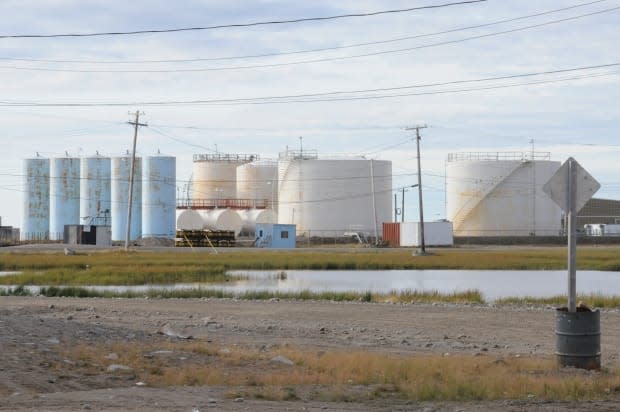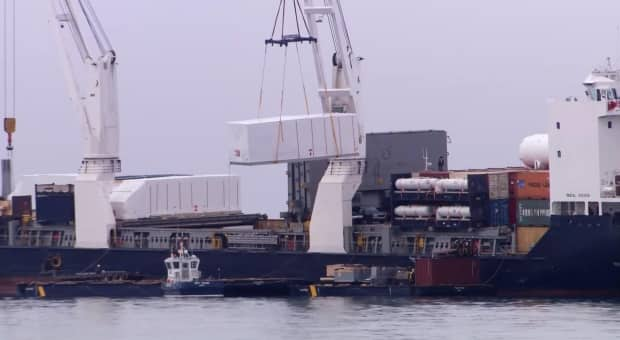Inuit in Nunavut suffer significant infrastructure inequality, report finds
Inuit in Nunavut have far less access to a wide range of infrastructure such as housing, health care, transportation and education compared to other Canadians, a new report from Nunavut Tunngavik Incorporated (NTI) found.
And that significant inequality makes every aspect of life more expensive while putting Arctic ecosystems at risk, the report says.
It was released on Wednesday during NTI's annual general meeting in Cambridge Bay, Nunavut.
"When you grow up in Nunavut and you've never left the territory, you take for granted what is available — you think that's normal," NTI President Aluki Kotierk told CBC News.
"It was important for us to demonstrate the inequalities so that Nunavut Inuit could realize that lack of infrastructure and how it negatively impacts on their lives."
The 259-page report aims to measure the gap in disparities as a starting point to address the inequalities.

Little has been done to measure the gap, the report says, despite years of talk from politicians.
"The infrastructure gap cannot remain just a talking point, recognized but not remedied," the report says.
Inequalities overlap and compound each other
It uses 55 "indicators" of the gap across 18 "infrastructure priority areas" grouped into three categories: energy and environment; people and communities; and connections.
The priority areas include power, waste water, housing, education, health and food sovereignty. As well, ports and harbours, telecommunications, air and justice were listed.
The report says these areas overlap and compound each other through factors like climate change, state of repair and skill development.

For example, any infrastructure project in Nunavut provides an opportunity for Inuit to receive skill development, Kotierk said.
The Nunavut government has spent millions of dollars quarantining construction workers from outside the territory during the pandemic, she added.
"That magnifies the reliance we have on outside employees coming into our territory, which goes against the potential investment of all those dollars into building the capacity for Inuit so that we're less reliant on outside employees," said Kotierk.
That lack of skill development impacts other infrastructure areas like housing, according to the report.
Between 2006 and 2018, the rate of Nunavut homes in need of major repair doubled 41 per cent from 20.2 per cent, the report says.
In the rest of Canada, that rate is nearly six times lower at 7.1 per cent, according to NTI.
Factors like climate change cut across inequalities
Meanwhile, the rate of climate change impacts has long been known to be higher in the Arctic — which the report says is compounded by Nunavut's reliance on diesel fuel.

About 50 million litres of diesel are shipped each year via sealift to Nunavut, which is the only Canadian jurisdiction without a regional power grid, NTI's report says.
Nunavut's reliance on diesel — which is more expensive, polluting and environmentally risky than other energy sources — is due in part to a lack of infrastructure links to the rest of Canada, the report says.
And despite Nunavut's reliance on sealift and having 40 per cent of Canada's shoreline, the territory has zero ports overseen by Transport Canada and only one harbour, says the report.
Other infrastructure statistics from the report comparing Nunavut to the rest of Canada include:
Maximum residential internet speed is eight times slower and six times more expensive.
Access to a regular healthcare provider like a doctor is six times lower.
Per capita spending on health care is 43 times higher than Manitoba's.
The average length of airport runways in Nunavut is less than half the length of runways in other major Canadian cities.
There are no heritage centres to protect cultural collections and artifacts.
The report says its purpose is to provide a practical way forward to address these issues.
That includes changing the narrative away from potential southern-designed solutions toward Nunavut and Inuit-specific realities, says the report.
The federal government has made a series of infrastructure commitments to the North, including helping the territory end its reliance on diesel fuel and providing broadband internet access by 2030.
But without evidence-based research like that provided in this report, it's hard to imagine how that can happen, Kotierk said.
"If we don't quantify it, it makes it very difficult to see if we're making progress," Kotierk said.


